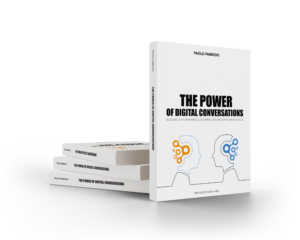Many organizations have introduced one or more digital support channels during the last 2-3 years. Unfortunately, some of them are suffering from conversational pain points leading to poor customer experiences. In particular there are three common issues that you can fix with training, by getting your customer service team up-skilled on specific engagement scenarios.
1. Inconsistent/wrong tone of voice
As a Digital Customer Service consultant and trainer I observe pretty often different conversational tone of voices across different channels. The issue is that some of them are not tailored to customer’s expectations over that specific channel.
Case examples:
- Your support team responds over Whatsapp using an ’email’ tone of voice. Consequently the customer perceives a cold, formal approach because the tone is not aligned with their expectations over that messaging channel (which instead should short, informal and straight to-the-point).
- You’ve set set up a proper tone of voice for your Digital Customer Service channel(s) but some of your agents are not following those guidelines. Therefore customers have different, conflicting experiences when having conversations with different agents…over the same channel!
2. Shaky customer satisfaction
That’s the certain consequence of poor customer experiences that I’ve just mentioned above. To the point that, when it comes to asking for customer’s feedback at the end of a conversation, results are unstable like a nervous stock exchange day. For instance, looking at an essential KPI such as Customer Satisfaction (CSAT) here are typical scenarios that I’ve observed:
- Fluctuating results. Example: January +5%, February -7%, March, +1% CSAT over one or more Digital Customer Service channels (i.e. messaging, social media, live chat, video chat). Typical doubts on managers’ mind are: ‘why is it happening?’ ‘What’s our (real) standard performance?’
- Poor customer feedbacks. Too few customers leave a feedback to your post-conversational survey (e.g. less < than 10% after over live chat). Therefore, whether good or bad results you get, they are insufficient to be consider them as reliable. Would you book an hotel room having a 5-star rating, but barely 9 reviews? So typical doubts on managers’ mind in this scenario are: ‘why customers are not providing enough feedbacks?’ ‘How can we improve response rate?’
3. Redundant interactions
Here’s another issue that you can fix with training. Your customer service team tend to use too many interactions to complete a conversation – especially for easy contact reasons. The most frequent root cause for that, having assessed thousands of digital conversations over the years, is lack of proactivity. Meaning that one or more support agents just respond to queries, without trying to anticipate/prevent customer’s next move. In the example below two different ways to handle the same conversation, with opposite results in terms of customer and agent experiences:
❌ [Case A.] Redundant interactions
- [Customer] “How can I change my payment method?”
- [Agent] “which method would you like to use?”
- [Customer] “I’d like to use my debit card”
- [Agent] “Unfortunately we only accept credits cards”
- [Customer] “I don’t have one, so what alternatives do I have?!”
- [Agent] “You may opt in for a direct debit on your bank account.”
- [Customer] “OK. So what shall I do then to change payment method?”
- [Agent] “All you have to do is […]”
✅ [Case B.] Effective interactions
- [Customer] “How can I change my payment method?”
- [Agent] “You’ve got two options: credit card or direct debit on you bank account. Which one would you prefer?”
- [Customer] “Direct debit would be OK. So what shall I do to change payment method?”
- [Agent] “It’s simple, all you have to do is […]”
About your customer service team
I’ve just shared these 3 frequent issues affecting digital conversations because they have a strong, negative impact on overall customer relationship. However, the first good news is that you can fix all of them with a proper training path for your support team. The second one, by up-skilling your team you also build an internal know-how that you can transfer onto the next new hires.
So, are you having Digital Customer Service conversational hiccups?
Have great conversations.
Image credit: Unsplash.com
P.S. Stay in the loop with the newsletter.







